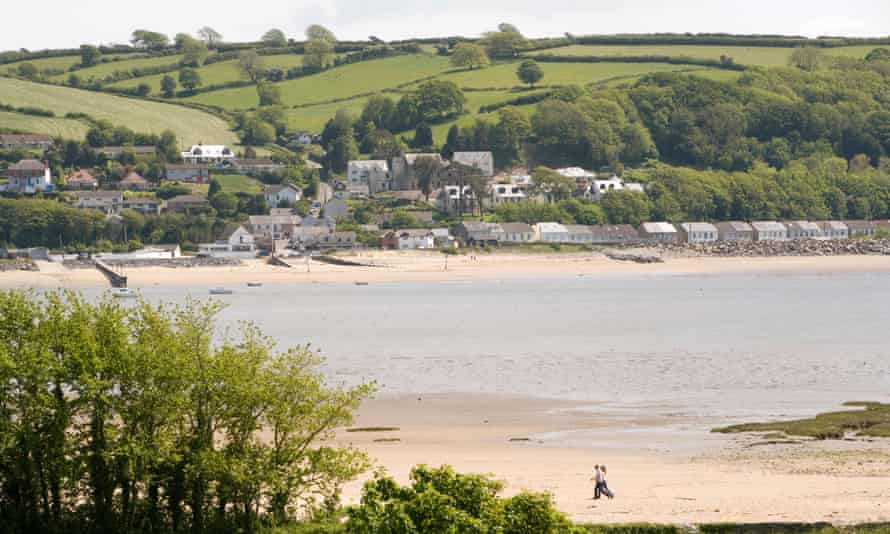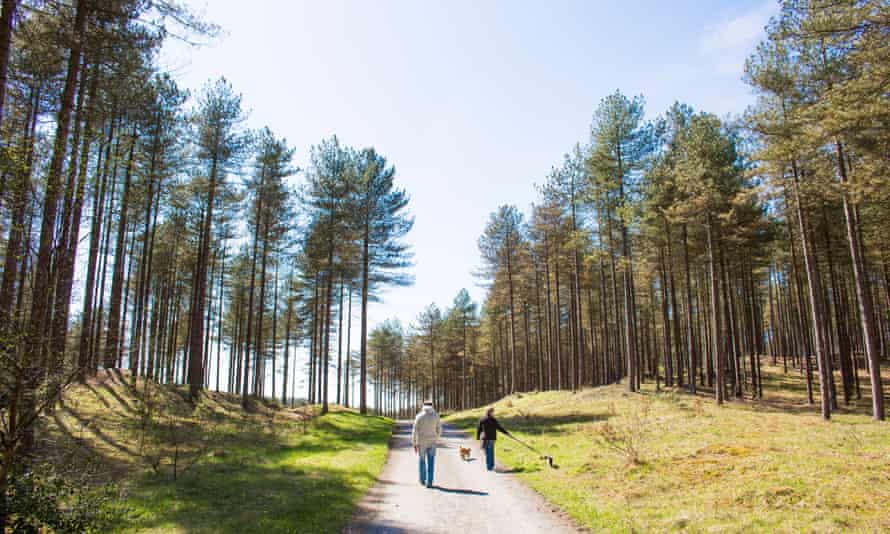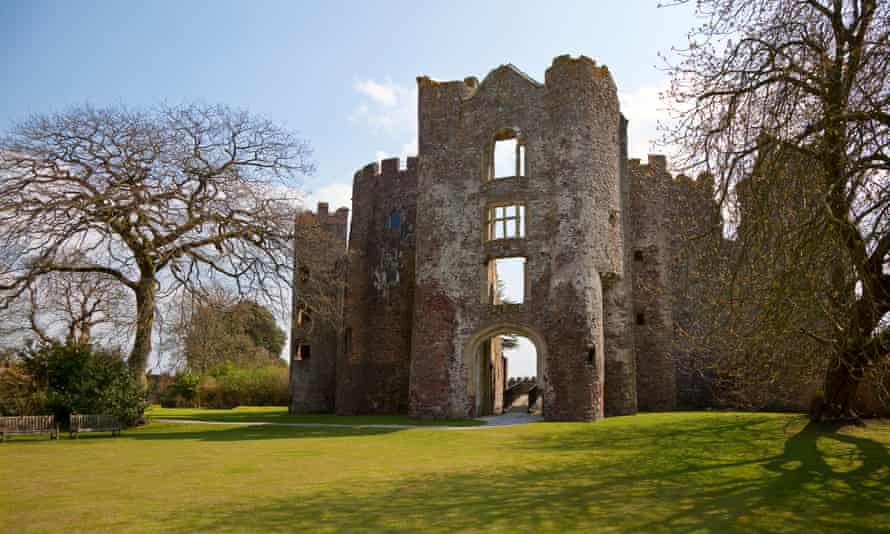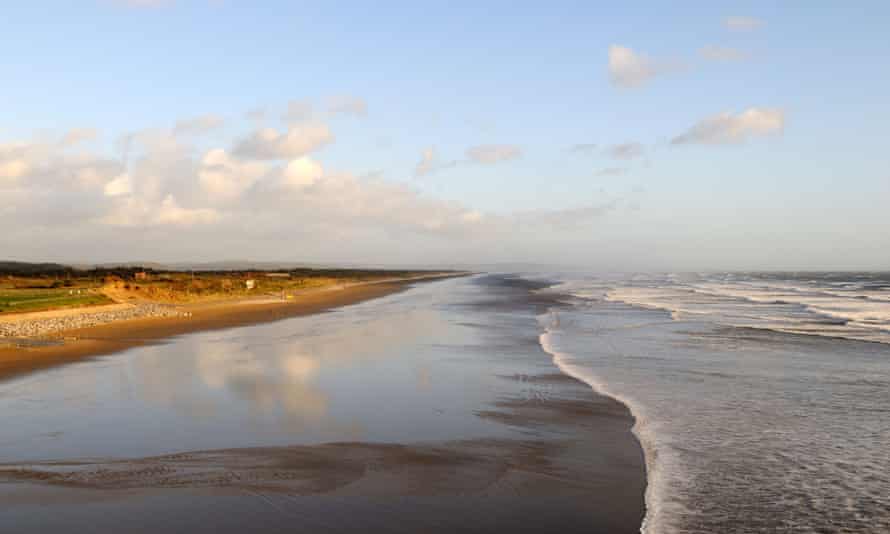Thank God no boozy poet or philandering painter was born or buried in Llandeilo in the heart of Carmarthenshire. If there were, it would probably be flooded with pilgrims. As it is, the small inland town on the mighty Tywy (or Towy) – the longest river that has its source and outlet in Wales – has a degree of quaintness, but not too much, and only a handful of gawpers admiring the pastel-painted facades. Most are, like me, on road trips, as the A40 which runs through Llandeilo is a greenery-fringed alternative to the busier Heads of the Valleys road just to the south, and there are coffees and buns and bowls of cawl (a local lamb and veg stew) to be had here.
Carmarthenshire – or Sir Gâr – known as the Garden of Wales, is one of the 13 historic counties. Still largely agricultural, it’s criss-crossed by quiet back roads and is where the M4 runs out. It’s one of many places in Wales people pass through without stopping and is something of a Cinderella county.
But the shiny English SUVs dashing for the beaches of Pembrokeshire are missing out. Close to Llandeilo is the Black Mountain range at the western end of the Brecon Beacons; here the national park is taken up by the 300 square-mile Fforest Fawr Geopark, which contains mountains and moorland, woods, meadows, towns and villages and some small lakes.
Beloved of locals but attracting nothing like the numbers who clamber around the likes of Pen y Fan, the peaks here are a little lower and smoother; the Cambrian era is named after Cymru, or Wales, and there’s something about the area that is archetypally Cambrian, suggesting great age and a brooding, sombre calm. I spend a glorious half-day on an eight-mile hike from the village of Llanddeusant, which takes me up past a trout hatchery and weir, then on to a steeper path along a ridge above the glacial lake of Llyn y Fan Fach. The terrain is semi-rugged but not at all technical. A brisk breeze ships in weather and the temperature dips, but this is more than compensated for by the dance of clouds over pale-green slopes.

The route continues via Picws Du; this peak, along with neighbouring Fan Foel, are the highest in the area, and while they rise only to 730 metres-plus (2,400 feet), they look much loftier due to their dramatic contours. There’s a bronze age barrow at the top of Picws Du, from where I can see back to the Cambrian Mountains and south to Swansea and the silvery shimmer of the Bristol Channel. From here it’s down to Llyn y Fan Fawr, another, slightly larger lake surrounded by peaty land, where I swing back to the starting point.
One of the reasons I like South Wales is that its open spaces abut industrial and post-industrial landscapes. The better-known and perhaps rougher-looking areas are around Merthyr and down by Port Talbot, but the Carmarthenshire coast played its own part in Wales’ gritty recent history.
I ditch the car to start a coastal jaunt at Llanelli, which looks out at the gorgeous Gower, but is all the things that the picturesque peninsula is not. Once known as “Tinopolis”, it used to produce huge quantities of tin and tin-plate, as well as coal. A westbound walk along the Wales Coast Path (WCP), from the bridge that crosses the tidal waters and treacherous mudflats of the River Loughor, takes in views of the Tata-owned Trostre steelworks, the twittering edges of a Wildfowl and Wetland Trust nature reserve, the former heavy industry hub of North Dock – overlooked by a Grade II-listed former hydraulic accumulator tower built around the 1900s – as well as patches of brownfield, marsh and scrub. In front of Llanelli’s Furnace Theatre, in town, a monument called Industrial Symphony honours male and female workers; the title could be used equally for the mix of landscapes.

It’s a little over 18 miles from Llanelli and Ferryside. Most of it is flat and there’s plenty on the way to look at. The Gower is always there, of course, pretty and pastoral in the haze, or drizzle. Closer by, Burry Port is where Amelia Earhart and her co-pilot and mechanic touched down in 1928 after crossing the Atlantic. Stretches of sand dune, salt marsh and old military installations lead to the verdant parkland and pine forest at Pembrey country park. At Kidwelly I head inland and up a little to admire the imposing walls of the Norman castle.
Ferryside is one of Carmarthen’s best-kept secrets. It faces on to one of the many estuaries that cut deep into the coast and over to Llansteffan and another castle. A community-based tourism project has made it the natural place to break a long walk. In 2015, seeing no one in officialdom helping to put Ferryside on the map, 10 trustees took out a 99-year lease on a disused ex-county council building. First they opened the lovely Pryd o Fwyd (A bite to eat) cafe and, in summer, they opened a new five-room hotel, Calon y Ferri. A post office, art gallery, restaurant and “Men’s Shed” share the same space. Locals still know the building, which has solar power, as The Billets in reference to an RAF air/sea rescue base that used to occupy the site. Ferryside is an unmanned stop on the main London/Cardiff-Milford Haven/Pembroke line – just in case you want to speed up your walking.

Founded by the Romans, Carmarthen has never received the kind of attention that York and Chester, or even Peterborough have enjoyed – because it’s in Wales. Chosen because of the Tywi and its raised position, the city of Moridunum had public baths and a temple. Fought over by the Normans and Welsh princes in medieval times, it was here that Henry VII’s father, Edmund Tudor (a family of Welsh origin), died from the bubonic plague in 1456 during the War of the Roses. This tussling for power is a reminder that the so-called Landsker line – the once-fortified division between Anglophone and Welsh-speaking Wales – passes close to here. I heard plenty of Welsh spoken in the lovely little market. There’s plenty of good picnic grub and pubs here, but I had lunch out at one of my favourite places not only in Wales but in the UK: Wrights Food Emporium, in Llanarthne – 8.5 miles east of the town centre – which has successfully reinvented itself post-Covid-19 as an outdoor eatery with a limited but lovely menu of pork rillettes and chicken cooked in perry.
Just nine miles away is the National Botanic Gardens of Wales. As well as a Norman Foster-designed glasshouse (toasty in the cold months), it recently concluded the Regency Restoration project – a community-led £7m scheme to return the site to its position, 200 years ago, as one of the UK’s finest waterparks. The five-year project, which included a large lake, waterfall, cascades, bridges and a dam set in 300 acres of wooded parkland, has just been nominated for a prestigious ICE People’s Choice engineering award.
Carmarthenshire has intriguing horticultural and herbal connections. A bed in the Apothecary’s Garden contains plants that might have been used by the “Physicians of Myddfai”. Folk legend has it that, in the 12th or 13th century, Rhiwallon and his three sons dispensed natural remedies and started a line of doctors that lasted till the 18th century. Flukily, one of the tales relates how the family received their initial commission from a mysterious lady of the lake – and the lake was Llyn y Fan Fach, which I had skirted two days earlier. Today, Prince Charles, who has a house at nearby Llwynywermod, keeps up the local tradition with his Duchy plant extracts and his homeopathic leanings.

Laugharne, 13 miles south-west of the county town, is Carmarthenshire’s one truly famous township – thanks to its boozy poet (Dylan Thomas) and, to a lesser extent, its philandering painter (Augustus John, a frequent visitor). It is possessed of a natural beauty that still stuns me – I lived there for three years – thanks to a glistening estuary, skeletal castle ruin and lovely sloping main street of Georgian houses. Visitors from all around the world come here to see the former homes and the grave of the poet. His descriptions of Laugharne as the “strangest town in Wales” and his evocations of its “heron-priested shore” are earworms for local residents, but Laugharne has survived Thomas as much as it has memorialised him; it has its own poetry, thanks to the people, the topography, the enduring remoteness. As well as the obvious pleasures of enjoying a pint in Brown’s (an old pub turned boutique hotel), the so-called Birthday Walk (after a Thomas poem) up to Sir John’s Hill is a joy; from the top of the headland there are views over to Worms Head on the Gower and to the white silken beach of Cefn Sidan – places I passed on my coastal hike.
For many, such a prospect would be a natural conclusion to a Carmarthenshire tour, but I preferred to wind up the trip on Pendine Sands. This seaside resort – all chalets, fish and chips and windbreaks – is understated, and underrated, in the way Tenby and Saundersfoot, a few miles to the west, are not. But the beach is a remarkable seven-miles long and, at high tide, gapingly wide strand. Used for numerous attempts to break the land speed record and for the Welsh TT in years gone by, it’s now a great empty beauty, too windy and exposed for delicate folk. After a bracing walk back into the cooling westerly, I find a cuppa at the top of the coast path walkway set into the cliffside. If Pembrokeshire is Little England, then perhaps Carmarthenshire is Little Wales: a patchwork of all the key elements, untainted by tourism. Let the smart SUVs roll on by; this is as good as anywhere.
All the coastal sections can be undertaken without a car; trains and buses connect all points. Good buses connect Carmarthen with Llanarthne/Wrights Food Emporium. For the Black Mountain range and National Botanic Gardens of Wales, local taxis are your best bet
Chris Moss is the author of Wales Coast Path: Tenby-Swansea (Aurum Press)




